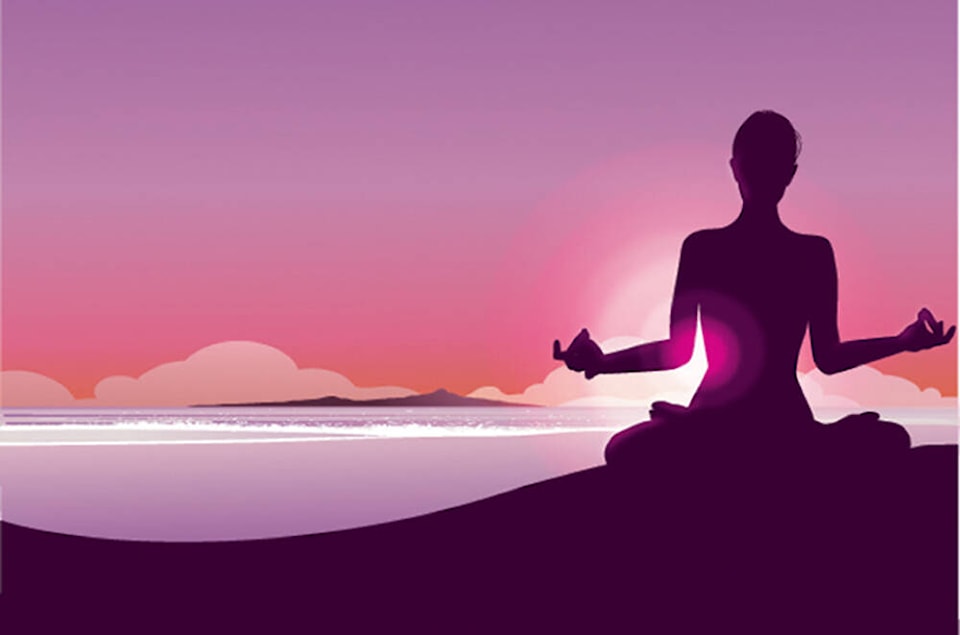By Kohlbey Ozipko, Certified Yoga Instructor, The Yoga Room
Although postures (asanas) are arguably the most practiced and popular aspect of yoga today—at least in the western world—they are not necessarily the most critical part of the practice.
Traditionally, yogis would actually practice a sequence of asanas to help prepare themselves for their meditative seat. The asanas would simply aid with bringing the mind into focus and perhaps burning off some excess energy that might prevent a yogi from being able to sit in meditation for an extended period of time.
There are many reasons why a yogi living in contemporary times might avoid the meditative aspect of yoga: they may feel that they don’t have time to sit in meditation for fifteen minutes after an already lengthy practice; they may feel that there are no benefits to sitting in meditation; they may feel that sitting in a cross-legged seat for more than a couple minutes is uncomfortable or even painful; most significantly, they may feel that sitting in meditation and being completely present is too challenging in and of itself.
Indeed, being completely present is challenging for most contemporary yogis: our lives are hectic and, as a result, our minds are too.
During meditation, it is common to find ourselves thinking about what occurred earlier in the day, week, or even month: stresses or progress made at work, in the home, or within relationships; awkward or joyful interactions we’ve had with others; emotions we’ve felt regarding certain situations and people. It’s also just as common to find ourselves thinking ahead and into the future: pending projects at work or in the home; the items currently sitting on our to-do lists; upcoming social engagements or gatherings.
It’s natural for these thoughts to float into our minds, especially during a period of meditation. We do not have to ignore these thoughts entirely during meditation, but it is best not to dwell on them, either. Instead, we might let the thoughts enter the mind, acknowledge the thoughts as they come, and then release them.
The more we practice this cycle of acknowledgement and release, the clearer our minds become until all we are left with at the end of a meditative session is the present moment.
And isn’t that wonderful?
Kohlbey is currently offering fifteen minutes of guided meditation at the end of her hour-long Tuesday Evening Yin Class at The Yoga Room from 7 to 8 p.m. to make it easier for her fellow Creston yogis to sit down, meditate, and be present on a regular basis. If you’re interested in learning more about Kohlbey’s current offerings, feel free to reach out to her directly through email at kohlbey.ozipko@alumni.ubc.ca.
The Yoga Room is located at 1204 Northwest Blvd. in Creston, B.C. For more information on class offerings at The Yoga Room, visit theyogaroomcreston.com.
READ MORE: The Yoga Room: A Space to Unite With Yourself and Others
